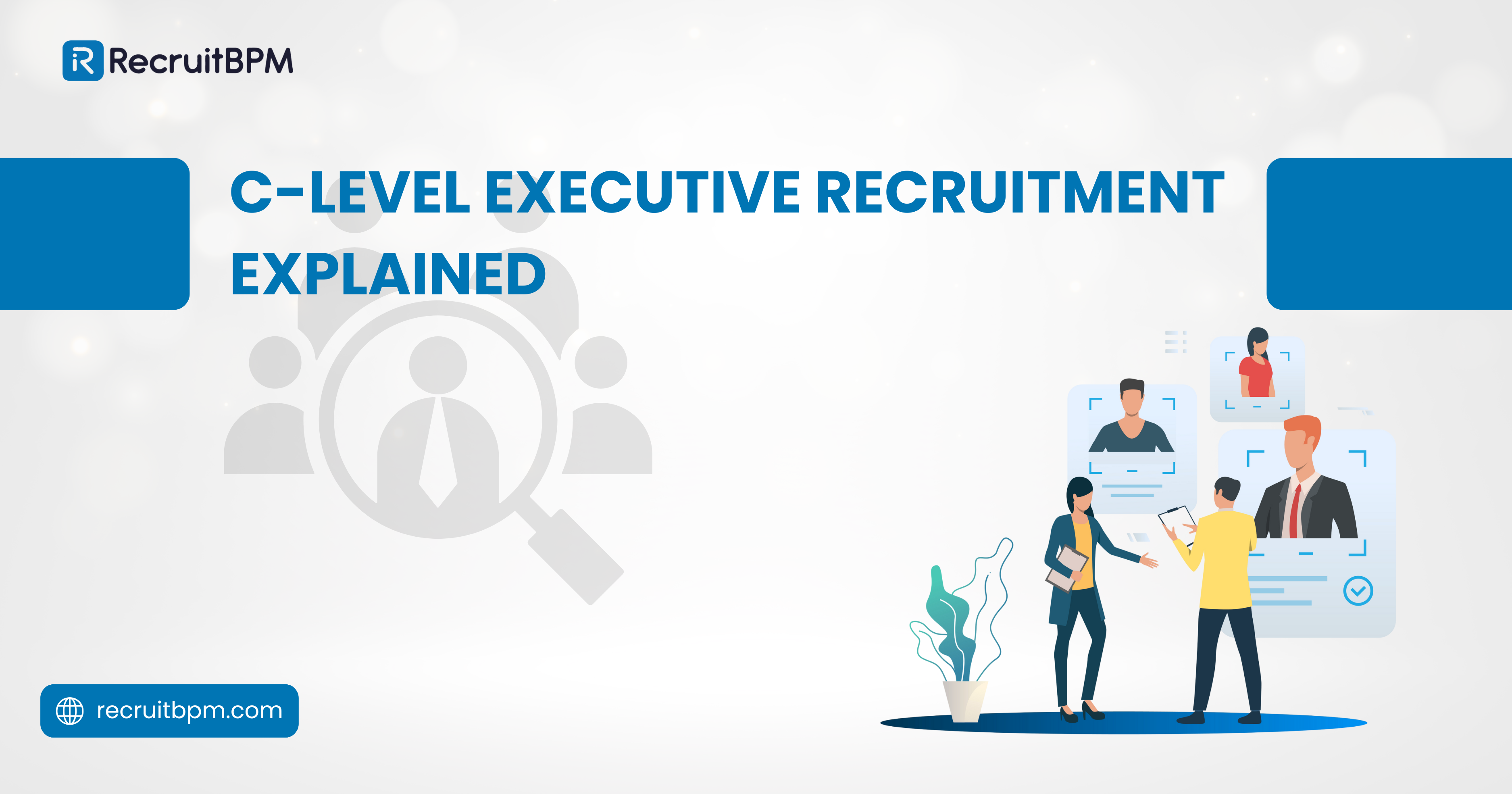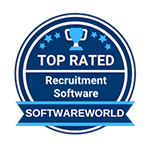Executive leadership determines organizational success or failure more directly than any other factor. The individuals occupying top strategic positions shape company culture, drive innovation, set financial direction, and ultimately decide whether businesses thrive or struggle.
C-level positions represent the apex of corporate hierarchy where strategic vision meets operational execution. For recruitment agencies, C-level placements offer the highest fees, strongest client relationships, and most significant impact on business outcomes. Yet executive recruitment demands specialized expertise, extensive networks, and sophisticated assessment capabilities that distinguish it from standard hiring. Mastering C-level recruitment separates elite agencies commanding premium positioning from those competing on commodity placements.
What is C-Level?
C-level, also called the C-suite, is a term used to describe high-ranking executive titles in an organization where the letter “C” stands for “chief.” C-level executives are senior leaders responsible for critical decision-making that shapes an organization’s direction and success. These top-tier executives hold the most decision-making power within companies and bear ultimate responsibility for organizational performance.
Key C-Level Executive Roles and Responsibilities
The term encompasses positions including Chief Executive Officer (CEO) who defines company direction and oversees operations, Chief Financial Officer (CFO) managing finances and strategic planning, Chief Operating Officer (COO) handling daily operations and process optimization, Chief Technology Officer (CTO) directing technology strategy and innovation, Chief Information Officer (CIO) overseeing information systems and data management, Chief Marketing Officer (CMO) leading brand strategy and customer acquisition, and Chief Human Resources Officer (CHRO) managing talent strategy and organizational development.
How Does the C-Level Work Together?
C-level executives work together to ensure that companies stay true to established plans and policies while making high-stakes decisions that affect entire organizations. Each executive is responsible for a particular area within a company’s hierarchy, yet they must collaborate across functions to achieve unified strategic objectives.
The Evolution of the C-Suite
The C-suite composition has evolved significantly. For decades, the C-suite was a small group with fairly predictable roles from organization to organization, typically limited to CEO, CFO, and COO. Modern organizations now feature expanded C-suites reflecting specialized business needs, including Chief Data Officers, Chief Sustainability Officers, Chief Diversity Officers, and Chief Experience Officers, among others.
Career Opportunities in the C-Suite
A C-level executive is an employee at the top of an organization’s hierarchy who makes key strategic decisions that affect the entire business. Large businesses have several diverse positions available in their C-suites that present many opportunities for people who aspire to serve in corporate leadership roles.
Why C-Level Matters for Recruitment Agencies?
The executive recruitment market represents the most lucrative and strategically important segment of talent acquisition, creating compelling reasons for recruitment agencies to develop C-level placement capabilities.
Premium fees justify specialized investment
C-level placements typically command fees ranging from 25-35% of first-year compensation, substantially higher than standard recruitment rates of 15-25%. When executive salaries reach $200,000-$500,000+ annually, single placements generate $50,000-$175,000+ in revenue. These economics justify the extended timelines, extensive due diligence, and sophisticated assessment processes that executive search demands.
Strategic client relationships emerge through executive placements
Organizations entrusting recruitment agencies with C-level searches demonstrate profound confidence. Successfully placing executives who drive business success creates enduring partnerships extending far beyond single transactions. Executive search clients become sources of ongoing recruitment needs, referrals, and long-term retainer agreements.
Market challenges create specialized opportunities
Recent data shows that 35% of companies struggle to find candidates with the right cultural fit for executive roles, while 28% of organizations face difficulties attracting diverse executive candidates. These persistent challenges create market opportunities for recruitment agencies developing expertise in executive assessment, cultural alignment evaluation, and diverse leadership sourcing.
Most recruitment agencies focus on mid-level positions, creating crowded, competitive landscapes. Executive search requires different capabilities—board-level relationships, confidential candidate engagement, comprehensive assessment methodologies, and sophisticated market intelligence. Agencies mastering these competencies operate in less competitive markets, commanding premium pricing.
Remote and hybrid flexibility expands candidate pools
Remote and hybrid roles account for 40% of executive job openings in 2025, dramatically expanding geographic reach for executive searches. Recruitment agencies no longer constrained by location access global executive talent pools, creating placement opportunities that were previously geographically impossible.
North American market leadership drives revenue potential
North America leads the executive search market with 45% of global revenue, reflecting the region’s dynamic business landscape and concentrated corporate headquarters. Recruitment agencies operating in this market access the highest-value executive search opportunities globally.
Long-term placement stability enhances reputation
Executive placements typically endure longer than mid-level hires. C-level executives carefully evaluate opportunities before accepting, reducing premature departure risks. Successful executive placements that drive organizational success for years become reputation-building case studies, attracting future clients.
Advisory relationships extend beyond placement
Executive search often evolves into strategic consulting where recruitment agencies advise on organizational structure, succession planning, leadership development, and talent strategy. These consulting relationships generate additional revenue while deepening client partnerships beyond transactional placement fees.
How to Use C-Level Effectively?
Recruiting C-level executives successfully requires fundamentally different approaches than standard hiring, demanding specialized methodologies, extensive networks, and sophisticated evaluation frameworks.
Build board-level and investor relationships proactively
C-level hiring decisions involve boards of directors, investors, and ownership groups. Recruitment agencies lacking these relationships struggle to access executive search opportunities. Attend industry conferences, join professional associations, publish thought leadership, and cultivate relationships with board members and private equity firms systematically.
Develop deep industry specialization
Generalist approaches fail in executive search where nuanced industry knowledge proves essential. Specialize in specific sectors—technology, healthcare, financial services, manufacturing—building expertise that enables credible conversations with sophisticated stakeholders and accurate assessment of executive capabilities within industry contexts.
Master confidential candidate engagement
Most qualified C-level candidates are successfully employed and not actively seeking opportunities. Executive search demands discrete outreach, confidential discussions, and relationship-building over extended periods. Develop communication approaches that respect candidate positions while exploring future opportunities without jeopardizing current roles.
Implement comprehensive assessment methodologies
Beyond resume review and interviews, executive assessment includes leadership style evaluations, strategic thinking assessments, cultural fit analysis, reference checks with board members and investors, background verification at appropriate depth, and sometimes psychological assessments. Multi-dimensional evaluation reduces costly executive hiring mistakes.
Understand compensation complexity thoroughly
Executive compensation extends far beyond base salary, including annual bonuses, long-term incentives, equity grants, retirement plans, severance agreements, and perquisites. Navigate these complex packages competently, advising both clients and candidates on market-competitive structures that close placements successfully.
Conduct extensive due diligence on all parties
Investigate companies thoroughly before accepting executive search engagements. Financial stability, board dynamics, strategic direction clarity, and organizational culture significantly impact executive success. Similarly, verify candidate backgrounds meticulously—previous company performance, leadership team feedback, and professional reputation—since executive failures create severe consequences.
Develop robust executive talent pipelines
Maintain ongoing relationships with high-potential executives before specific search needs arise. Attend industry events, host executive roundtables, publish research, and cultivate networks systematically. When search opportunities emerge, established relationships accelerate candidate engagement compared to cold outreach.
Master storytelling that attracts passive executives
Successfully employed C-level candidates need compelling reasons to explore new opportunities. Develop narratives around transformation opportunities, industry leadership positions, strategic challenges, and legacy-building possibilities that resonate with executive motivations beyond compensation increases alone.
Provide strategic advisory services beyond placement
Position your agency as a strategic partner rather than a transactional vendor. Advise on organizational structure optimization, succession planning strategies, leadership team composition, and talent development initiatives. This consultative positioning generates additional revenue while strengthening client relationships.
Leverage data and market intelligence extensively
Executive search requires sophisticated market intelligence about compensation trends, competitive executive movements, emerging industry leaders, and organizational performance patterns. Invest in research capabilities, data analytics, and market monitoring that inform strategic recommendations to clients and candidates.
Establish rigorous process discipline
Executive searches spanning months require systematic project management—stakeholder alignment, search strategy documentation, candidate pipeline tracking, assessment coordination, and communication cadences. Process discipline prevents searches from stalling or losing momentum over extended timelines.
Build diverse executive candidate networks deliberately
The challenge of attracting diverse executive candidates requires proactive network development beyond traditional sources. Partner with diversity-focused professional organizations, attend inclusive leadership conferences, and cultivate relationships with executives from underrepresented backgrounds systematically.
Common Challenges with C-Level
Despite substantial rewards, executive recruitment presents distinct challenges that agencies must navigate successfully to build sustainable C-level placement practices.
Extended timelines test agency patience and cash flow
Executive searches commonly span 3-6 months from engagement to placement, with some extending beyond a year. These extended timelines delay revenue recognition while consuming substantial resources. Agencies accustomed to 30-60 day placement cycles struggle with executive search economics requiring different financial planning.
Cultural fit assessment remains subjective and difficult
While 35% of companies struggle to find candidates with the right cultural fit, assessing cultural alignment objectively challenges even experienced executive recruiters. Executive failures often trace to cultural misalignment rather than capability gaps. Developing reliable cultural assessment frameworks requires sophisticated methodologies beyond standard interviewing.
Confidentiality requirements complicate process management
Executive searches demand extraordinary discretion. Candidates risk current positions if searches become public; companies avoid market speculation about leadership changes. Managing confidential processes while coordinating multiple stakeholders, conducting reference checks, and negotiating offers creates logistical complexity.
Compensation negotiations involve complex, multi-party discussions
Executive offers include numerous components requiring board approval, investor input, and legal review. Negotiations extend over weeks involving multiple draft agreements, changing terms, and stakeholder alignment challenges. Failed negotiations after months of work create devastating outcomes for recruitment agencies.
Limited candidate pools intensify competition
Truly qualified C-level candidates for specific industries and situations number in dozens rather than hundreds. Multiple executive search firms often pursue the same small candidate pool simultaneously. Competition requires differentiated value propositions, superior client opportunities, and stronger candidate relationships.
Board and investor dynamics create decision complexity
Executive hiring decisions involve numerous stakeholders with potentially conflicting priorities. Board members may disagree on ideal candidate profiles; investors might prioritize different capabilities than management teams. Navigating these dynamics requires political acumen and stakeholder management beyond typical recruitment skills.
Failure consequences amplify pressure and reduce risk tolerance
Poor executive hires create severe organizational damage—strategic missteps, team disruption, competitive setbacks, and substantial financial losses. These high stakes make clients extremely risk-averse, demanding extensive validation that lengthens processes and sometimes prevents decisions despite strong candidates.
Diverse executive pipeline development requires sustained effort
The documented difficulty attracting diverse executive candidates (28% of organizations report this challenge) reflects systemic pipeline gaps rather than single recruitment cycle challenges. Building diverse executive networks requires years of relationship cultivation, not quick fixes.
Geographic preferences limit flexibility despite remote options
While 40% of executive roles offer remote flexibility, many companies and candidates prefer headquarters proximity for senior leadership. These location preferences constrain candidate pools and sometimes force difficult trade-offs between ideal candidates and acceptable locations.
Reference checking presents unique sensitivities
Verifying executive performance through references requires extraordinary discretion. Board members and investors represent appropriate references, but accessing them without alerting markets to leadership searches challenges recruiters. Superficial reference checking risks missing critical performance concerns.
Market intelligence gathering demands continuous investment
Executive search requires a sophisticated understanding of competitive dynamics, emerging leaders, organizational performance, and industry trends. Developing and maintaining this intelligence demands ongoing research investment that smaller agencies struggle to justify.
Technology disruption creates capability uncertainty
Recent trends show that 24% of companies use AI for entire interview processes, expected to rise to 29% by end of 2025. How AI and other technologies reshape executive assessment remains uncertain, requiring agencies to adapt methodologies while maintaining assessment rigor that high-stakes placements demand.

















